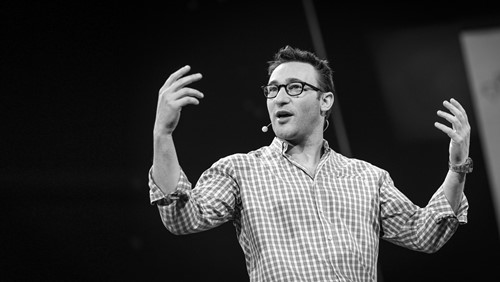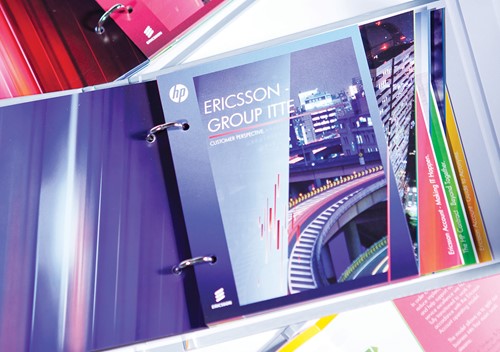There’s nothing better than getting all the relevant stakeholders round the table to thrash things out, remembering of course that there’s a difference between healthy debate and heated debate. Workshops are a tried and tested forum to do just that, whether it’s to scope out requirements for a new website or software product, or to marketing or brand strategies and all our projects kick off with at least one.
Sometimes we’re asked to deliver a workshop in isolation, which we’re always happy to do where it can help resolve direction. This was the case recently with a brand messaging session for a software systems company based in Manchester but part of a large global group head-quartered in Germany. The German hierarchy had carried out its own process to define the organisation’s brand messaging focusing on vision and mission statements. However the UK CEO felt that these had lost something either in translation or culture and there were some slight nuances between market focus, and that they didn’t reflect the UK operation. He asked us to help the senior leadership team develop a more relevant set of messages, so we proposed a workshop.
We find that it’s good to start with a bit of a reminder of what branding is all about to ensure everyone around the table is in the same page. To some people, brand this equates to a logo, but modern branding is much more than this. We take a quick look at the history of branding and roots which founded in heraldry - the flag we fight under - and how businesses have adopted the same essential principles with the coats of arms of yesterday becoming the logos of today.
The most succinct definition of what we now understand branding to be, that I’ve found, is from guru Wally Olins. Now sadly passed away, Wally was described as ‘the world’s leading practitioner of branding and identity’ by the financial times and is widely recognised as a pioneer in the field. His track record included Fujitsu, Renault, Volkswagen, Tata, and BT, but the brands he’ll be most remembered for are Orange mobile phones and and the London Olympics both of which are recognised as ground-breaking. He wrote several books including the seminal work Corporate Identity, published in 20 languages and he held fellowships and professorships at a number of leading business schools and universities, including the Said Business School at Oxford University.

“Branding is about creating and sustaining trust which means delivering on promises. The best and most successful brands are completely coherent. In everything an organisation does, owns and produces it should project a clear idea of what it is. This is achieved by consistency in purpose, performance and appearance.” Wally Olins
In order to visualise the holistic nature of this concept, we’ve developed our own ‘brand DNA’ model which incorporates brand imagery including the logo and all the elements we see, the brand persona (which includes the messaging the session was focused on) and the brand experience.

Before moving onto messaging, we spent a little time considering the importance of the brand experience which is especially significant with a service business as the quality of service delivery will ultimately define the brand. It’s important not to forget that while a strong visual identity is important (and consistent application is key to achieving this) the overall perception of the brand is created by all the combined elements of the brand’s dna. Most importantly, this includes the experience people have when they engage with it. The easiest way to think about this is by thinking about our experiences as consumers taking a restaurant as an example. We have all had dreadful meals with poor service and tell our friends we’re never going back, onto fabulous ones with exceptional service where we can’t stop talking about it and recommending it to our friends.
‘Start with why’ is an approach to brand messaging popularised by Marketing guru Simon Sinek who proposed that:
“Very few people or companies can clearly articulate why they do what they do. By why I mean your purpose, cause or belief - why does your company exist? Why do you get out of bed every morning? and why should anyone care? People don’t buy what you do, they buy why you do it.” Simon Sinek

We looked at Sinek’s ‘Golden Circle’ which starts with the who, what and where of a brand before moving onto the how and ultimately the why, which is all about focusing on benefits not features. A great example being Lego, which doesn’t mention toys or playtime because their why is to ‘inspire and develop the builders of tomorrow.’ which is about creativity and inspiration. Taking the golden circle as a principle, all the team members took part in a keyword exercise to ‘brain dump’ words and phrases for the company’s what, how and why. These were collectively grouped and then ranked before another exercise in which everyone wrote a draft why proposition - why we do what we do? Why are we different? Why choose us?.
These phrases were shared and then compared to the Group’s statements which highlighted some differences in language, terminology and bias. These were discussed by the group at length with the best phrases pulled into a draft version which we’ve since further refined into a new why proposition.
The workshop then discussed the merits of an elevator pitch as opposed to the perhaps outdated mission statements. An elevator pitch is a clear and concise summary of the business that everyone should be able to provide when someone asks them: “so, who are you and what do you do then?” It’s meant to be conversational so it doesn’t need to be remembered verbatim, but everyone in the business should be able to deliver all the key points. It should focus on the why, then the how before the what, who and where - the golden circle in reverse. There are several versions of the origins of the elevator pitch, the most famous being of a junior journalist at Vanity Fair who was struggling to pitch story ideas to her editor, so she jumped into the lift with them knowing there was thirty seconds before the editor would arrive on their floor and get out, so she distilled her ideas into half a minute hence the elevator pitch was created. Again, since the workshop, we’ve built on the why proposition to create a draft elevator pitch to also include their approach, process, positioning, expertise, experience, teamwork and successful outcomes all in a few lines.
Defining the brand messaging is of course critical, and the workshop has enabled us to quickly get to agreed versions, but they need the buy-in of the whole organisation if it’s to become a shared mission and part of the ‘flag we fight under’. There’s no sliver bullet when it comes to internal communications, the answer is to repeat the message over and over again and in as many ways as possible. This starts with the leadership team leading by example - behaviours are inherited - ‘if it’s okay for them it’s okay for me’ - always set the best example you can - communication and communication style, delivering on promises, tackling issues head on, putting on your ‘game face’ etc etc. A ‘big bang’ event to launch the new era, such as a company away day adds real emphasis to the importance of everyone buying in, can have real impact but this inevitably fades over time so repeat and reinforce in one-to-ones and in team meetings. Then there’s ongoing team building - away days, nights out, dinners, third party events - conferences, trade events, networking, training - tailored [e.g. communications, management or conflict resolution] as well as vocational [software etc]. We’re already looking at ways to reinforce the brand in the offices with large format graphics, brand imagery and branded items.
We also discussed staff handbooks incorporating written charters to cover not only messaging but also approach, behaviours, language, dress codes and process. We’ve developed a few of these in the past to support internal comms and referenced these examples:

Case study: HP Ericsson
Swedish telecoms giant outsourced their IT to HP within a 5 year Multi-billion pound contract in which HP managed both their own staff and Ericsson’s in-house IT teams. Internal communication was key to success and to support this we developed a staff handbook which featured tabbed sections of information, advice and guidance. The sections were housed in a ring binder which was updated regularly. Production values were high to encourage staff retention.

Case study: The Atlas Consortium
The Atlas Consortium comprised of HP, Microsoft, IBM and Fujitsu, was formed to deliver DII [Defence Information Infrastructure] for the MOD, at the time it was the largest IT implementation in Europe. Tens of thousands of staff from the 4 partners plus in-house MOD staff had to work together to deliver the program. As part of the internal comms exercise we developed a staff ‘pocketbook’ which provided information and guidance in several tabulated sections, housed in a ring binder as regular updates and new sections were distributed regularly.
As well as printed formats, we also built a large intranet for HP and MOD staff within a later phase of the internal comms program.

Case study: HP MOD
HP provided IT services to the MOD with a team of HP and MOD staff who were inherited as part of a contract which also saw rationalisation often with many redundancies. Internal communication across all teams was key so to support this we developed a large intranet which housed information and digital assets including videos [training and
presentations], documents and lots of operational models presented as infographics. The platform was secure accessed by staff based on roles/permissions with access to content accordingly as well as frequent updates to all staff.
All the HP examples, handbooks and intranet, were developed some time ago and perhaps a more modern and agile method is to use playbooks. We discussed the potential of developing a series of playbooks for each business process and standard operating procedure [SOP] including expectations and guidance on approach [tone of voice]. Playbooks would be broken down into individual topics/tasks and by each role and responsibility within the overall business strategy. The playbooks can be housed on Sharepoint, an intranet or even a wiki such as confluence - whatever is best for accessibility and management, ideally a system that tracks users and activity. A routine/method around distribution or notifications should be devised - ‘new playbook available’ with differentiators highlighted.
Playbooks could be created as simple videos, or voice-notes or podcasts as well as or instead of documents. The content could also form the basis of a staff handbook, with creation and management delegated across staff according to their role i.e. sales who would then take on the responsibility of creating, sharing and updating - where a process can be improved or where best practice is identified, which should be recognised and rewarded [above and beyond work that led to positive customer feedback or up-selling or add-on sales opportunities].
Finally, this led to a discussion about recognition and the thorny subject of employee awards and rewards. It’s important to recognise and highlight excellence and best practice by staff, which is also a great way to reinforce and repeat the message across the team, and recognition is often of more value to the individual than a reward - although of course both are good! Setting a fair system can be tricky as some team members may make a more obvious contribution than others. For example a new client win is great for sales and is immediately evident, but some proactive changes in admin might be equally valuable but less obvious? It needs careful consideration and be appropriate for the organisation otherwise it can be counterproductive; What’s the most appropriate process - what’s the criteria? Who identifies? Who decides? How often? What is the reward? And what’s the most appropriate method of communication?

